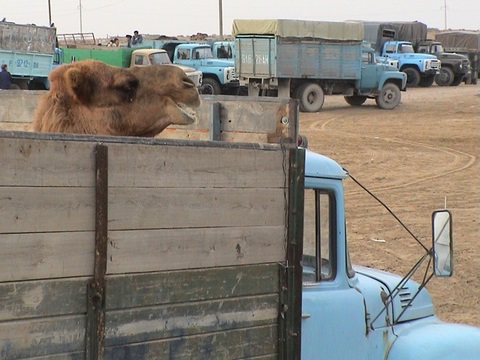Turkmenistan is a desert country with a population the size of Minnesota (just over five million). It doesn’t invade its neighbors (though it has a dismal record of oppressing its own citizens), and its leadership doesn’t engage in regular rhetorical lashings of the United States.
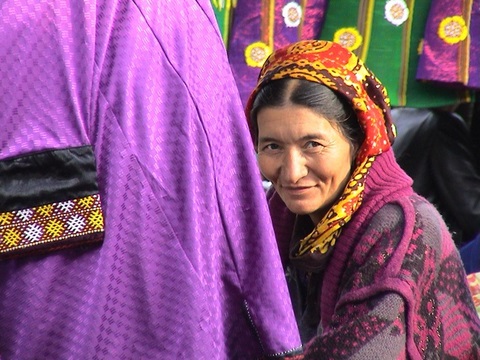
Colors at a Market, Turkmenistan
Travelers do not visit in droves, partly because of the lack of infrastructure, but even more (I suspect) because it can be so darn exasperating to get a visa. These are but some of the reasons why Turkmenistan, a Central Asian nation that until 1991 had been a Soviet republic, isn’t one of the easier places for most people to find on a map.
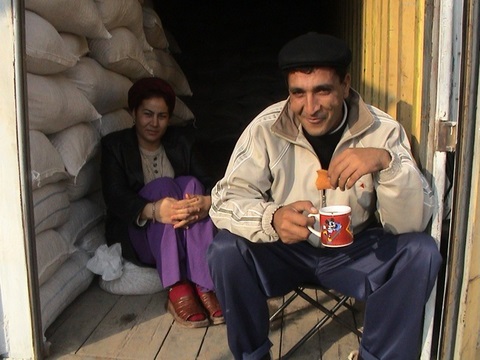
Hot Tea At A Market,Turkmenistan
But a few folks know exactly where it is. Military planners do, since Turkmenistan borders Afghanistan. Men and women in boardrooms of major oil companies such as Chevron and BP do as well, since Turkmenistan has the second largest natural gas reserves in the world.

Storefront Market, Turkmenistan
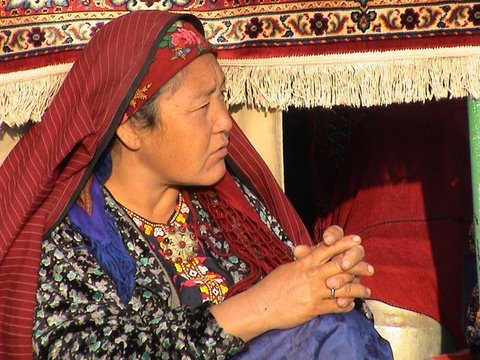
Women,Turkmenistan Marketplace
So do a lot of government planners rooting for better US-Iran relations, since the best way for the U.S. to access Turkmenistan’s underground wealth would be via a pipeline running from Turkmenistan to the Persian Gulf (i.e., through Iran).
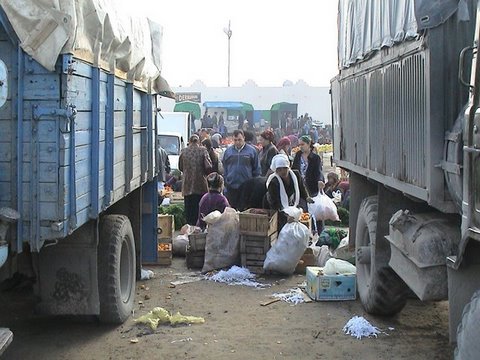
Market,Turkmenistan
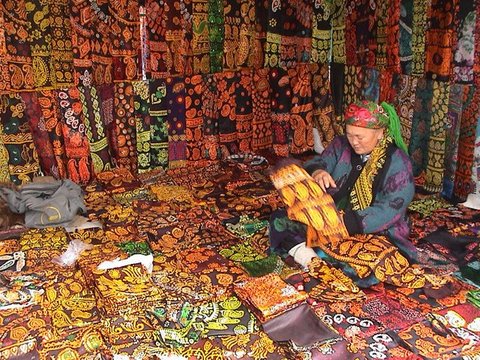
Cloth at a Marketplace, Turkmenistan
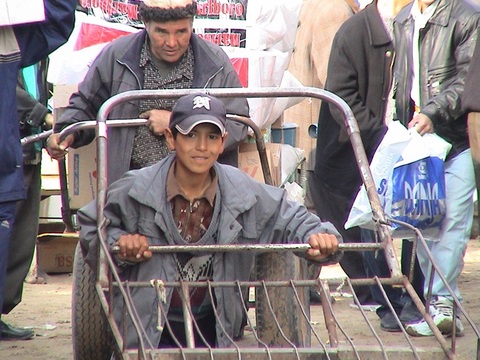
I imagine there are other kinds of folks who know where Turkmenistan is, but the rest of this article will be devoted to only one: camel market aficionados.
I’ve been to markets in the Middle East where camels are hawked and showcased, but in terms of entertainment and visuals the Tolkuchka Bazaar, just a few miles from downtown Ashgabat (Turkmenistan’s capital), wins the prize. To be honest, it isn’t just the camels that make the place great.
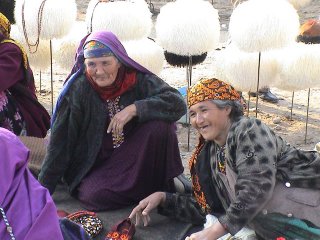
Women at Marketplace, Turkmenistan
If arriving by bus from downtown, you may first choose to wander through the rest of the giant market, where everything is on sale—carpets and jewelry, jeans and laundry soap, plastic bags and bales of rice. All these things are sold by people whose faces, at least for someone like me who until recently knew so little about Central Asia, are mesmerizing. The people look like history, as if just yesterday they had wondered across the Asian steppe, or stood against harsh desert winds.
But on to the camels...
Camels are ornery beasts, at least some of the time. I’ve seen them get angry, spitting and cussing (well, maybe not the latter), looking at you with calmness but also with an eye that clearly says, “I’ll kill you if I ever get the chance.” When they smile and bare their teeth I’m reminded that their jaws can crush a man’s skull. When they bend their long legs I’m reminded that with one swift kick they can turn a man into a eunuch.
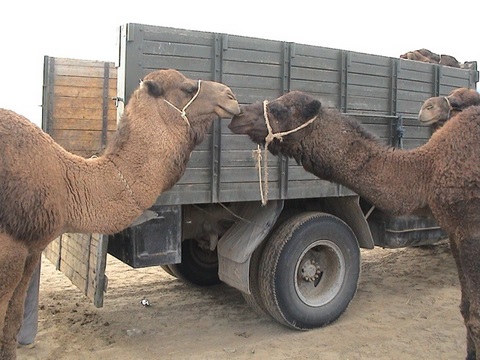
Kissing Camels, Turkmenistan
And every single time I lay eyes on one, no matter what the camel is doing, I remember the story a military contractor in Saudi Arabia once told me about a camel he had once walloped on the head with a cast iron skillet: when the camel saw him months later alone in the desert, he remembered him and a chase ensued. The man found cover in his land cruiser, which the camel proceeded to batter.
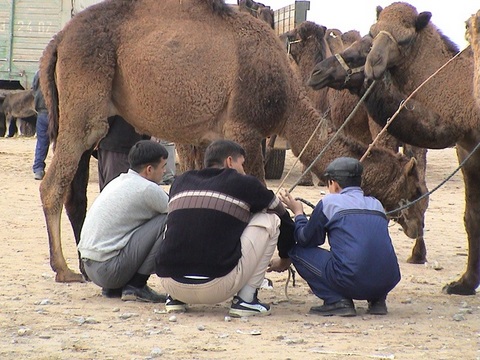
And so I love camels. They are mysterious and laid back. They spit and chase animal abusers in the desert. They carry Lawrence of Arabia to Aqaba, tourists around the Great Pyramids of Giza (for a few bucks), and many a Bedouin down desert trails. And in the Tolkuchka Bazaar, they moan and meander among old Russian trucks as Turkmen traders bargain over their fate in squatted circles.
And through it all, their faces—at least to this observer—exude a stubborn serenity which even a frying pan probably couldn’t knock away.
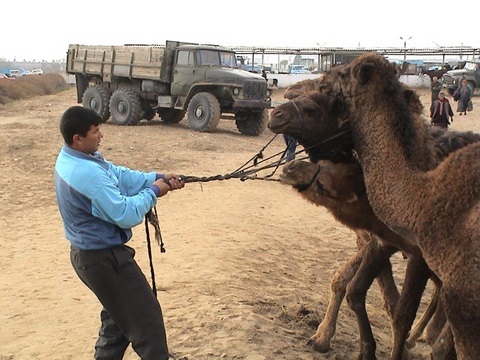
Fighting Camel, Turkmenistan
Joel Carillet, first chief editor of Wandering Educators, is a freelance writer and photographer based in Tennessee. He is the author of 30 Reasons to Travel: Photographs and Reflections from Southeast Asia. To learn more about him, visit www.joelcarillet.com.
